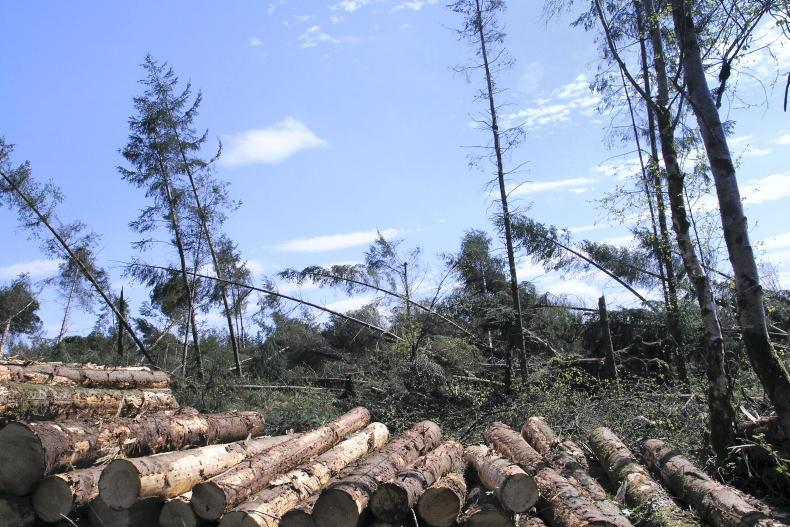Now that more accurate information is available on the area, volume and ownership of windblown forests, an action plan should be well underway to maximise the value of damaged timber caused by storm Éowyn.
When storm Gudrun blew down Sweden’s forests, harvesting standing sales were suspended within days and overseas harvesters were making their way to help clear the windblown forests, which amounted to one year’s harvest.
Yet six weeks after storm Éowyn, Irish harvesters are still operating in standing sales and not one overseas harvester is operating here to help clear the windblow, which contain four year’s harvest for privately owned forests.
While Minister of State, Michael Healy-Rae and his taskforce have done excellent work in quantifying the volume and area of damaged forests, the implementation of a strategy to harvest and maximise the damage of windblown forests has been absent so far.
The main stakeholders, including the Forest Service in the Department of Agriculture, Food and the Marine (DAFM), forest owners, sawmills, contractors, wood energy outlets can now plan a way out of this disaster. This will require a greater sense of urgency, which three taskforce meetings in eight weeks – the next scheduled for 18 March – does not convey.
While we don’t have an independent forestry development agency designed to tackle this disaster, there are a number of steps that can be taken to maximise the value of our damaged forests and minimise the stress and loss caused to hundreds of forest owners, mainly farmers.
Strategy
The taskforce needs to outline a clear strategy, which includes the appointment of a storm manager and area co-ordinators to cover badly affected counties.
The storm manager, guided by the taskforce, needs to have sufficient authority to implement a viable forest recovery plan, which includes identifying measures that the minister can introduce to ensure the delivery of the strategy. The following are a number of steps that can provide confidence to owners of windblown forests.
The damaged area of 23,652h will require some 2,100 licences based on average forest sizes of 8ha in private and 20-25ha in Coillte forests. It is estimated that 40% of these have licences, which means that 1,200 new licences are required. These should be issued within three months, so sales can be assembled over the next year and harvesting cluster groups can be arranged. Based on 20 licences weekly so far this year, at best 240 licences will be issued within this time, so permits are vital.
The challenge is to sell the additional product to domestic and UK markets, as well as exploring continental outlets.
“Log markets are fairly strong across much of Europe, such as Sweden, where sawlog prices have doubled over the last few years and by 30% in 2024,” according to Dr Cormac O’Carroll, senior adviser with Dasos Capital. “Consequently, countries such as Sweden and Germany are pushing up sawnwood prices, but this is always a fine balance, as end-user demand and construction remain depressed.”
Processing mills will need support from Enterprise Ireland in maximising export markets, while the extra transport costs in hauling timber over much longer distances, along with logistic challenges, will need State subvention.
Paying by m3 harvested may not be practicable in the short-term, but if not, then the mills should be open to the same scrutiny as Coillte demands from them. Coillte has solved this problem by monitoring all timber over sawmill weighbridge by a Coillte employee. This system should be made available to private sellers and supported by DAFM and Coillte, who would help train personnel to implement the scheme, which thereafter should be funded by private forest owners.
A timber sales contract should be in place prior to harvesting to protect the seller, harvester and purchaser. Check the ITGA agreement (itga.ie/services/information/sales-systems) and seek the advice of a professional forester.
Existing initiatives should be promoted by DAFM and Teagasc, which provide information such as felling decision tool, roundwood production forecast, windthrow model tool. In addition, private companies such as Euroforest Ireland have been holding information meetings, while Treemetrics Ltd has made satellite mapping analysis data available free of charge to private growers.
